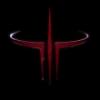[size=2](via Kotaku)
I'm not sure why it was posted with such sketchy details (not the user's code, says he will get hands on it later) but at least the guy who posted it is well-known for his technical expertise, mainly from the iCEenhancer mod for GTA4 (warning - turn down/off your sound the video music is pretty horrible IMO). So I would assume he has a valid reason for getting it online.
Anyone know whose work this is? Obviously stunning as a tech demo by itself, of course I wonder if there's any CPU cycles left after the rendering and physics







